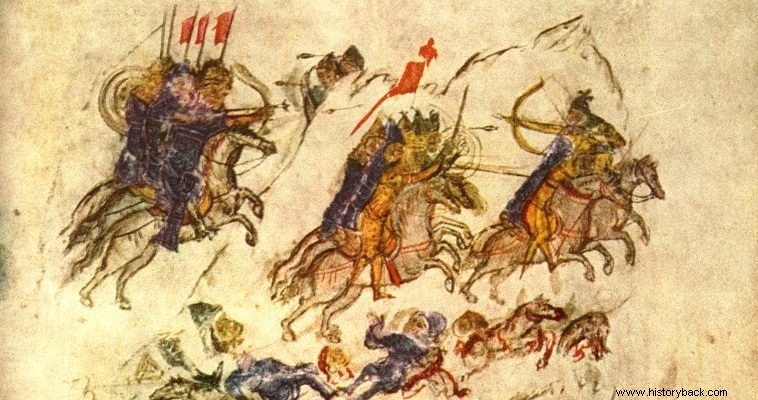
After the disastrous defeat at Manzikert in 1071, the Byzantine Empire faltered. The ascension to the throne of incompetent emperors and the civil conflicts that followed, exacerbated the weakening of the Empire. 10 years passed after the disaster before a remarkable soldier-emperor, Alexios I Komnenos, ascended the throne again.
The Pechenegs or Patsinakes as they were known in Byzantium, were a Turkic people who had migrated north of the Black Sea, there at the time. In the 9th century they had allied with the Byzantines against the Magyars while in the 10th century according to Byzantine sources, they had reached present-day Romania. Later, taking advantage of the weakness of the Empire, they began the destructive, according to the custom of his tribe, raids as far as Thrace.
In the spring of 1087 the Pechenegs launched a raid of unprecedented intensity with over 80,000 warriors plundering almost the entire northeastern Balkans. However, Alexios could not react as he did not have the necessary forces to face such a large enemy force.
But he gradually reorganized the Byzantine Army and allied himself with the Cumans , another Turkic people who were to play a catalytic role in Byzantine military history for over two centuries. Cumans and Pechenegs were allies for a time, but later their relations were seriously disturbed.
Alexios took advantage of their dispute and, offering gold, took the Cumans with him. At the beginning of 1091 the emperor was ready and moved against the Pechenegs. Alexios had assembled a strong force of 65,500 men of which 20,000 were Byzantine, 40,000 were Cumans, 5,000 Vlachs and 500 western mercenary knights.
Alexius sent elite light cavalry as scouts to locate the enemy. The Byzantine army tracked the Pechenegs and on April 28, 1091 found themselves opposite the enemy camp in the Levunio region in the Ebro river delta. The Pechenegs, who had their families with them, did not understand a single thing.
Alexios did not attack directly. He would set out at first light the next morning with the aim of completely surprising his opponents. That's what happened. At dawn on April 29, the Byzantine army rushed out so suddenly that the Pechenegs did not even manage to resist... Soon Byzantines and Cumans found themselves inside the camp and began to mercilessly slaughter the Pecheneg slaughterers, retaliating in kind.
The Pecheneg warriors tried in every way to take up arms and defend themselves but all they managed to do was to be exterminated by the thousands by the arrows and swords of their opponents. The massacre only stopped when the pitiful remnants of the Patsinaki forces surrendered together with their families.
Very few were the surviving Patsinakes, although the battle lasted only a short time. After all, what was left of this people was exterminated by the emperor John Komnenos in 1122. The victory of Alexios was particularly important and gave new life to the Empire.
